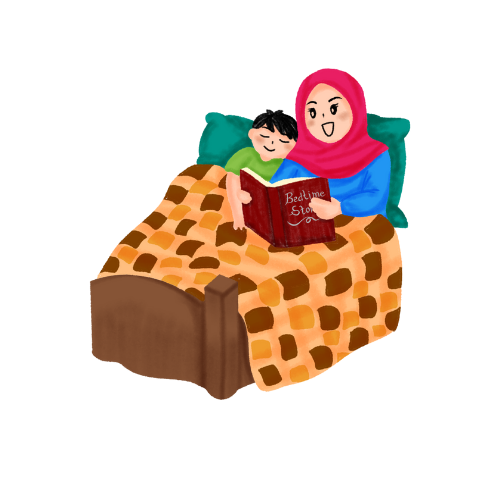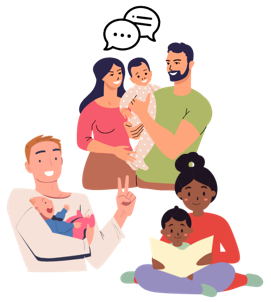Språk og samspill – fra 8 måneder // Language and interaction – from 8 months
Did you know?
Babies babble a lot and use sounds to make themselves understood. The baby’s memory improves during this period and the baby can recognize words even though it may not be able to say anything yet. The baby learns language by you talking to it and saying the same words many times.
The baby likes to play with you.
Language of the heart
For many people, the language of the heart is the language that people can use to explain their feelings most easily, and the language they dream in. The language of the heart is often also the language people feel most comfortable with.
Use the language that is most natural to you when talking to your baby.

Talk to your child
Tell your child about what you’re doing when you are with your child, for example: “Now I’m going to get a spoon so I can feed you”.
Put words to the actions you do in different situations.
Talk about what you see, what you do together, and what your child shows interest in.
Your child likes it when you talk slowly and in a soft voice.

Sing to your child
Use movements that match the songs you sing to your child.
Find things that your child can use to make sounds. Your child will enjoy this.
Examples of children’s songs with movements:
- Brother John
- Row, row, row your boat
- Itsy bitsy spider
- If you’re happy and you know it

Play together
Talk to your child about the toys.
Pass toys back and forth between you while telling your child what you are doing.
Children like repetition, so feel free to do the same thing several times.
Take turns leading the game.
Examples of activities you can do with your child:
- Play peekaboo.
- Fill and empty a box of toys, such as a shape sorter or a box of blocks.
- Play with building blocks (build up and tear down).

Create good reading routines
Have books available to your child where they play.
Show your child the pictures in books and talk about what you see.
Let your child point, turn the pages, and hold the book themselves.
Set aside some time each day to look at books together. Find a regular time of day to do this, such as before bedtime or after dinner time. Reading time doesn’t have to take long. Sometimes just looking at one picture is enough, or it can be more fun to switch books several times.



